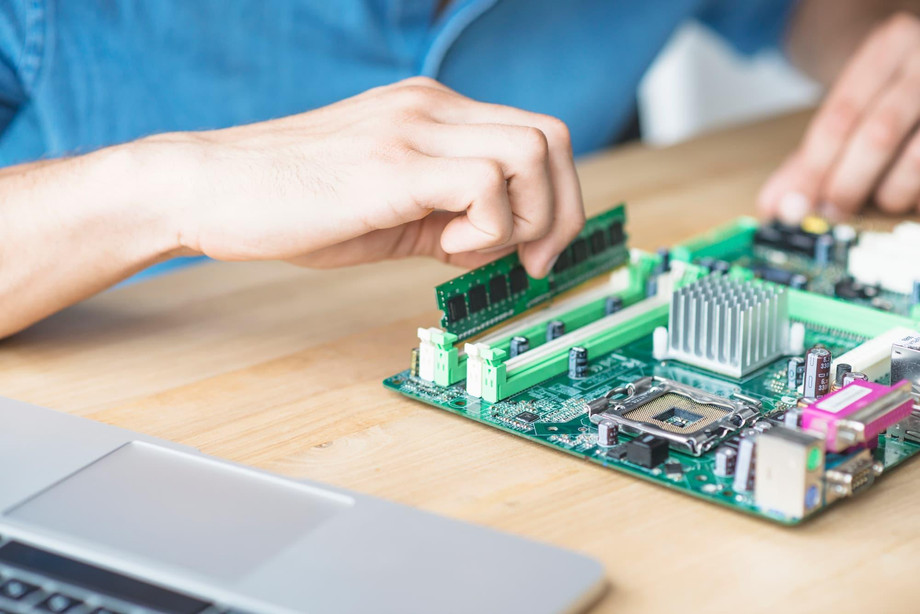In the fast-paced world of robotics, performance is not just a benchmark; it’s a necessity. With the advent of advanced embedded systems, the robotics industry is witnessing a transformation that enhances operational efficiency, precision, and versatility. This blog delves into the innovations in embedded system development that are reshaping the landscape of robotics, enabling machines to perform with unprecedented capability.
Understanding Embedded Systems in Robotics
Embedded systems are specialized computing systems that perform dedicated functions within larger mechanical or electrical systems. In robotics, these systems are integral to controlling sensors, actuators, and other essential components. The integration of embedded systems into robotic frameworks allows for real-time processing and decision-making, significantly boosting the robot's functionality and reliability.
Enhanced Control Systems
One of the key innovations in embedded systems is the development of sophisticated control algorithms. These algorithms enable robots to execute complex tasks with precision. For instance, advanced PID (Proportional, Integral, Derivative) controllers help maintain stability in robotic movements, improving performance in applications ranging from manufacturing to healthcare.
Moreover, the integration of artificial intelligence (AI) within embedded systems allows for adaptive learning. Robots can analyze their performance over time and adjust their operations accordingly, making them more efficient and capable of handling diverse environments. This adaptability is crucial in industries such as agriculture and logistics, where conditions can vary widely.
Real-Time Data Processing
The ability to process data in real-time is a game-changer for robotic performance. Modern embedded systems are designed to handle vast amounts of data from various sensors, enabling robots to make immediate decisions based on their environment. For example, robots equipped with LiDAR sensors can map their surroundings and navigate obstacles without human intervention.
This real-time data processing is particularly beneficial in applications like autonomous vehicles, where timely responses can mean the difference between safety and disaster. As embedded systems evolve, the speed and efficiency of data processing continue to improve, leading to safer and more reliable robotics.
Connectivity and Integration
With the rise of the Internet of Things (IoT), embedded systems have become more interconnected, allowing robots to communicate with each other and with central systems. This connectivity facilitates coordinated actions among multiple robots, enhancing their collective performance. In industrial settings, for instance, robotic arms on an assembly line can synchronize their movements to increase throughput and reduce production time.
Furthermore, the integration of cloud computing with embedded systems enables robots to access vast databases and machine learning resources. This access empowers robots to leverage data from previous operations, leading to better decision-making and performance improvements over time.
Improved Energy Efficiency
Energy efficiency is a critical consideration in robotics, especially for mobile robots that rely on batteries. Innovations in embedded system development have led to more energy-efficient algorithms and hardware designs. For instance, low-power microcontrollers and energy-harvesting techniques allow robots to extend their operational time without frequent recharging.
Additionally, embedded systems can optimize power consumption by analyzing workload patterns and adjusting their performance accordingly. This capability is particularly useful in applications such as drone technology, where battery life is paramount.
Safety and Security Enhancements
As robotics technology advances, ensuring the safety and security of these systems becomes increasingly important. Embedded systems now incorporate advanced safety features, such as fail-safes and redundancy systems, to prevent malfunctions that could lead to accidents.
Moreover, the integration of cybersecurity measures within embedded systems helps protect robots from malicious attacks. As robots become more interconnected, safeguarding them against potential vulnerabilities is essential to maintaining operational integrity and safety.
Case Studies: Real-World Applications
Several industries are already reaping the benefits of embedded system innovations in robotics.
-
Manufacturing: In the manufacturing sector, companies are deploying robots equipped with advanced embedded systems for quality control and assembly tasks. These robots can detect defects in real-time and make adjustments, significantly reducing waste and improving product quality.
-
Healthcare: In healthcare, surgical robots utilize embedded systems for precision in minimally invasive procedures. With real-time data processing, these robots can assist surgeons in performing complex operations with higher accuracy, leading to better patient outcomes.
-
Agriculture: Agricultural robots are using embedded systems to analyze soil conditions and monitor crop health. This data allows farmers to make informed decisions about irrigation and fertilization, maximizing yield while minimizing resource use.
-
Logistics: In the logistics sector, autonomous robots are revolutionizing warehouse management. These robots can navigate complex environments, track inventory in real-time, and coordinate with human workers, streamlining operations and reducing labor costs.
The Future of Robotics and Embedded Systems
The future of robotics is inextricably linked to advancements in embedded system development. As technologies continue to evolve, we can expect to see even more innovative applications, from robotic exoskeletons enhancing human capabilities to collaborative robots working alongside humans in various industries.
The ongoing integration of AI, machine learning, and enhanced connectivity will drive further enhancements in robotics performance, making robots more capable, adaptable, and efficient. As these innovations unfold, industries worldwide will benefit from improved productivity and the ability to tackle complex challenges.
Conclusion
Embedded system development is at the forefront of revolutionizing robotics performance. By enhancing control systems, enabling real-time data processing, and improving connectivity, these innovations are reshaping how robots operate across various industries. As we continue to explore and expand the capabilities of embedded systems, the potential for robotics to transform our lives is boundless. Embracing these advancements will ensure that businesses remain competitive and that robotics becomes an integral part of our future.
In this era of technological innovation, the synergy between robotics and embedded systems development is not just a trend; it’s the cornerstone of a new industrial revolution, promising to enhance efficiency, safety, and overall performance in every sector.
To Know More About embedded systems development

